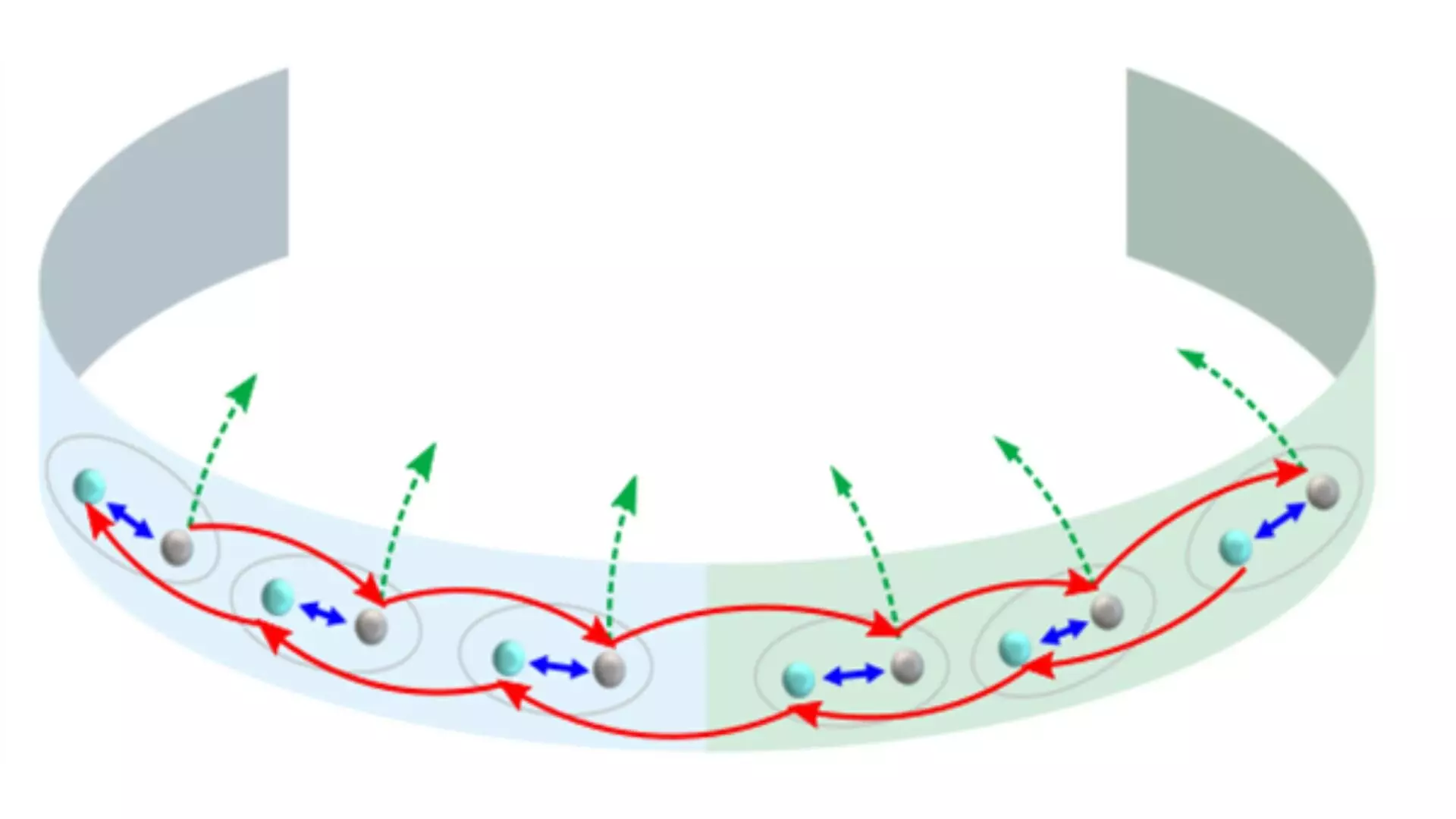Scientists have recently made a groundbreaking discovery in the realm of quantum dynamics by observing the first experimental evidence of non-Hermitian edge bursts. This revelation, as detailed in a Physical Review Letters study, sheds light on the unique behaviors exhibited by non-Hermitian systems. These systems play a pivotal role in comprehending real-world phenomena characterized by dissipation, interactions with the environment, or gain-and-loss mechanisms. The emergence of new physics, such as boundary localization, in non-Hermitian systems offers promising applications in photonics and condensed matter physics.
Noteworthy researchers in this study include Prof. Wei Yi from the University of Science and Technology of China, Prof. Zhong Wang from Tsinghua University, and Prof. Peng Xue from Beijing Computational Science Research Center. Prof. Xue expressed that the flourishing exploration of non-Hermitian systems was fueled by the discovery of the non-Hermitian skin effect (NHSE). This effect, initially coined in a previous PRL study by Prof. Wang and his colleague, has since been a focal point for the team’s research endeavors. Prof. Yi highlighted the team’s curiosity surrounding potential dynamic phenomena closely linked to boundaries within non-Hermitian systems.
Unlike Hermitian systems, operators in non-Hermitian systems do not align with their Hermitian conjugates, resulting in complex eigenvalues and the manifestation of distinctive phenomena like the NHSE. In the NHSE, the eigenstates of a non-Hermitian system cluster at the edges or boundaries, showcasing behavior distinct from the bulk properties observed in Hermitian systems. Typically observed in open systems featuring energy gain or loss, the NHSE has been previously explored in static conditions. However, the current study delved into the dynamic evolution of edge dynamics in non-Hermitian systems.
To investigate real-time edge dynamics in non-Hermitian systems, the researchers leveraged a one-dimensional quantum walk setup involving photons. Their setup, integrating quantum coin flips to dictate movement and a boundary to separate distinct regions with varied quantum walk rules, enabled them to study edge dynamics. Through meticulous manipulation using optical tools like beam splitters and wave plates, the researchers probed how loss mechanisms operate at boundaries, utilizing partially polarizing beam splitters to induce photon loss for measurement upon exit.
An integral finding of the study was the confirmation of the non-Hermitian edge burst, marked by an increased probability of photon loss at the boundary. This phenomenon only occurs when two specific conditions align: the presence of the NHSE and the closure of the imaginary gap in the energy spectrum. The researchers elucidated that the interplay between static localization and dynamic evolution at the boundaries offers a comprehensive insight into non-Hermitian systems.
The experimental validation of real-time edge bursts in non-Hermitian systems unveils a novel interplay between topological physics and dynamic phenomena, opening new avenues for research in the field. The potential applications of this phenomenon, such as localized light harvesting and quantum sensing, hold promise for advancements in photonics and related disciplines. Prof. Xue emphasized that the study’s findings pave the way for exploring the rich dynamics of non-Hermitian topological systems, hinting at the presence of universal scaling relations in these systems.
The edge burst effect observed in non-Hermitian systems presents a significant opportunity for precise light or particle harvesting at specific locations, with far-reaching implications for various wave-based fields. This study not only deepens our understanding of non-Hermitian systems but also underscores the potential for innovative applications in emerging technologies.


Leave a Reply